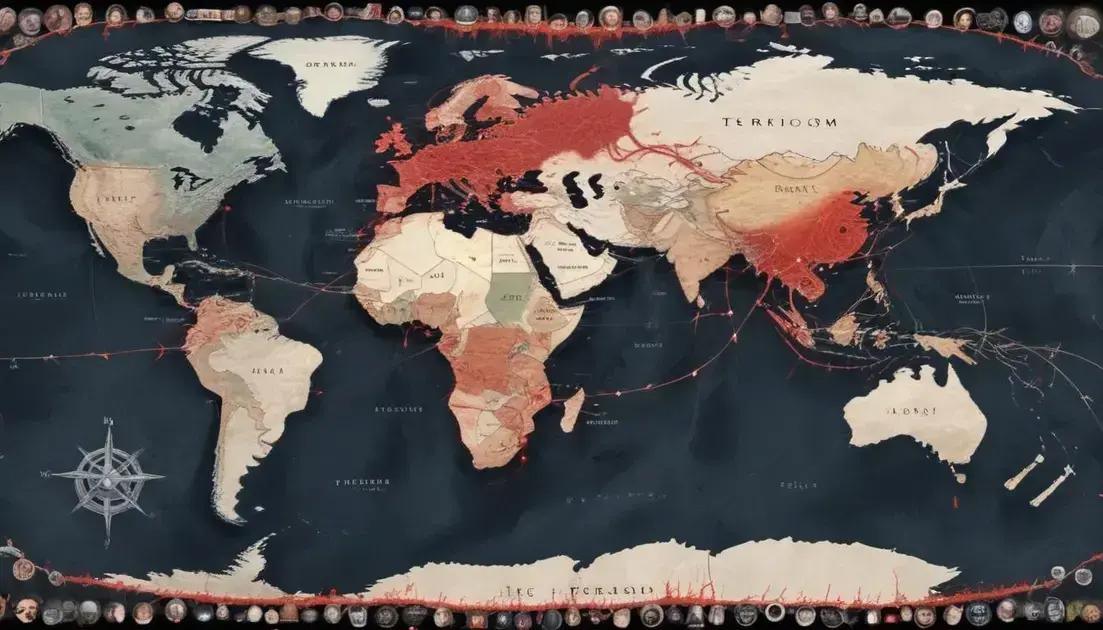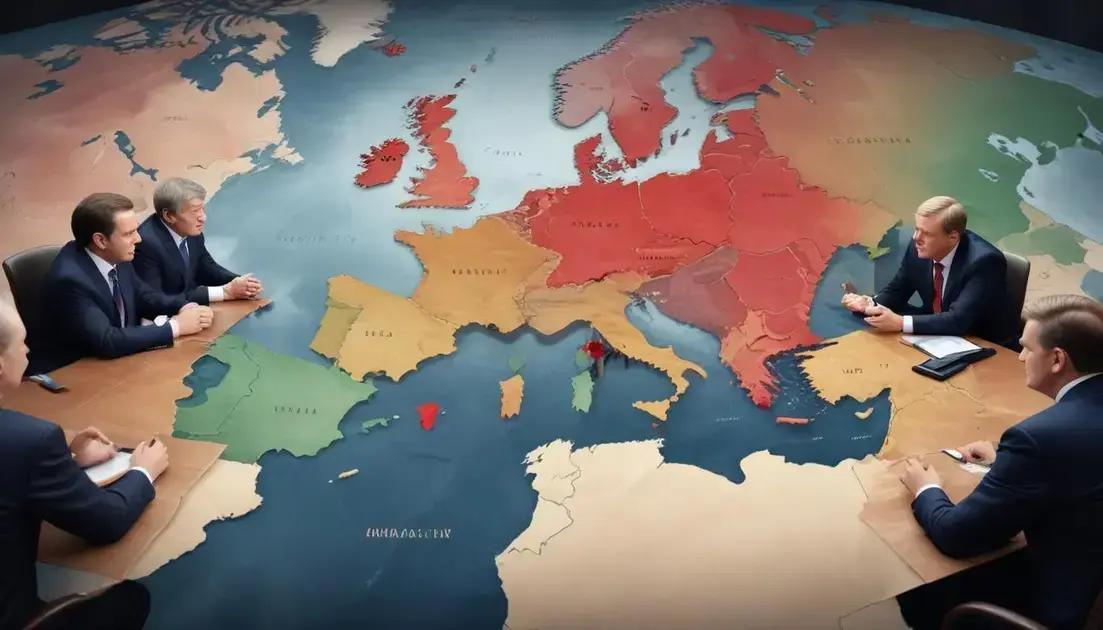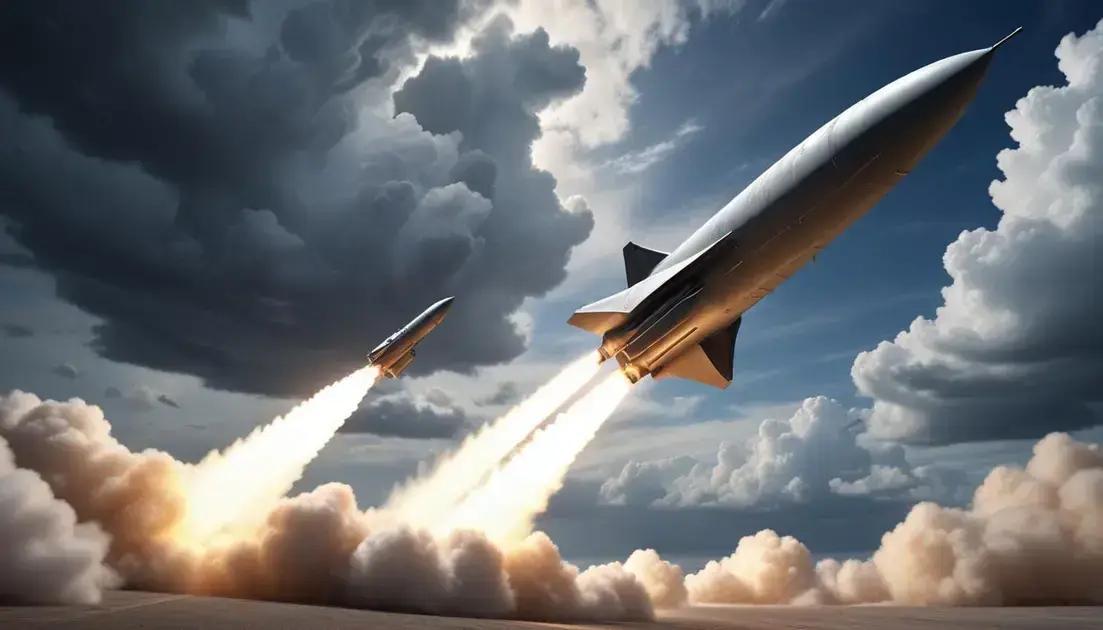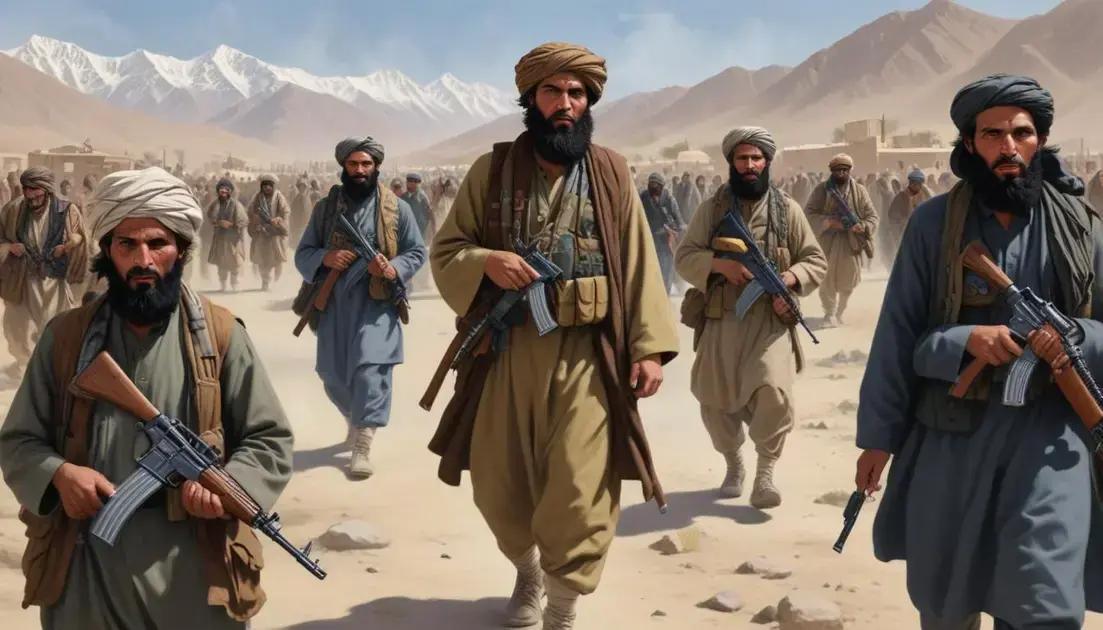
Terrorism: a legacy of the Cold War
Terrorism’s legacy significantly shapes modern global security and international relations. By examining Cold War ideologies and current funding sources, we can understand how past conflicts influence today’s terrorist groups. The emergence of new global enemies and their recruitment tactics highlight the ongoing challenges. Recognizing these elements is essential for developing effective strategies to prevent terrorism and promote peace across nations.
The concept of Terrorism has evolved dramatically since the Cold War, intertwining historical ideologies with contemporary conflicts. This article explores how past decisions shape today’s global landscape.
Introduction to terrorism and its origins
Terrorism has a long and complex history. It has roots that go deep into various cultures and conflicts. Often, it arises in response to perceived injustice or oppression. Understanding terrorism means looking at its origins and the reasons behind it.
The term “terrorism” itself dates back to the French Revolution. It was used to describe violent acts intended to create fear and change political structures. Over time, many groups have used similar tactics to achieve different goals.
Today, terrorism can stem from political, religious, or social grievances. Groups may resort to violence when they feel unheard. The act of terror can seem like the only way to make a point in a world where their voices seem lost.
For example, some terrorist groups say they fight for freedom or to defend their people. This perspective makes terrorism a deeply controversial topic. Many see it as a last resort, while others view it as criminal behavior.
By looking at the origins of terrorism, we can better understand why it persists today. Addressing the underlying issues may help prevent future acts of violence.
The impact of Cold War ideologies on modern terrorism
Cold War ideologies had a significant impact on modern terrorism. During this time, many nations operated under clear, opposing beliefs. The struggle between capitalism and communism fueled conflicts around the world. These ideologies shaped how groups viewed their enemies.
For instance, some groups saw themselves as freedom fighters against oppressors. They believed their actions were justified in the name of liberation. This mindset continues to influence terrorist groups today.
Also, Cold War tactics, like propaganda and guerrilla warfare, set examples for modern extremists. Many learn from past conflicts to develop their strategies. This means the legacy of the Cold War isn’t just historical; it’s active in today’s conflicts.
The clash of ideologies created a breeding ground for resentment. Many young people, feeling hopeless in their societies, turn to extremism. They are drawn to groups that offer a sense of purpose or identity, often rooted in past grievances.
Understanding this historical context can help in addressing current terrorism. By recognizing how ideologies shape actions, we can better grasp modern threats and seek effective solutions.
Examining new global enemies
Today, the world sees many new global enemies. These groups often arise from complex issues, like political strife or economic hardship. Understanding these enemies is key to addressing threats effectively.
Many of these groups use social media to spread their message. They attract followers by exploiting feelings of anger and injustice. This new wave of recruitment is faster and broader than ever before.
For example, some groups emerge from regions marked by war and instability. They promise security and belonging to young, disillusioned individuals. This creates a cycle that fuels further violence.
Furthermore, many of these enemies operate globally. They aren’t limited to one country or region anymore. This makes them harder to track and combat. Countries must work together to address these threats.
Recognizing the motivations behind these new enemies helps in finding solutions. Many seek recognition or power. By understanding this, we can develop better strategies to fight back.
The role of funding in terrorism
Funding is a crucial aspect of terrorism. Without money, many terrorist activities couldn’t happen. Groups rely on various sources to finance their operations.
Some terrorists get funds from legitimate businesses or donations. Others may engage in illegal activities, like drug trafficking or smuggling. This money helps them recruit members, train fighters, and execute attacks.
Additionally, social media has made fundraising easier. Many groups use online platforms to reach potential donors worldwide. This modern approach allows them to gather resources quickly and effectively.
Governments around the world try to cut off funding sources. They work to track and block money transfers linked to terrorist organizations. This ongoing battle is vital for national and global security.
Understanding the flow of money in terrorism can help prevent attacks. By identifying and disrupting funding channels, authorities can make it harder for groups to operate.
Conclusions about terrorism’s legacy
Terrorism’s legacy is complex and far-reaching. It shapes how nations interact and influences global policies. The impacts of past terrorist acts linger in the minds of people and governments.
Many societies have changed their security measures because of terrorism. This has led to increased surveillance and stricter laws. While these changes aim to keep people safe, they can also raise concerns about personal freedoms.
Moreover, the fear of terrorism can influence international relations. Countries often form alliances based on shared threats. This can either enhance cooperation or create further divisions.
Understanding the legacy of terrorism is crucial. It reminds us that history shapes our present and future responses. By studying these impacts, we can work towards more effective solutions and promote peace.
Conclusion
In conclusion, understanding terrorism and its roots is crucial for a safer future. The legacies of past conflicts and ideologies shape today’s world in many ways. By learning about the impacts of funding, new enemies, and historical contexts, we gain valuable insights.
Addressing these issues requires cooperation and awareness. Working together, countries can better fight terrorism and promote peace. Awareness also helps in creating a more informed society that challenges radicalism and seeks understanding.
Ultimately, tackling terrorism isn’t just about security. It’s about fostering stronger communities and building a world where dialogue and understanding prevail over violence. Together we can make a difference.


